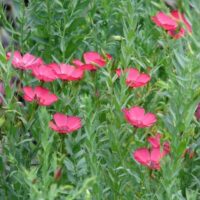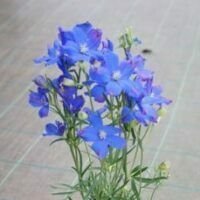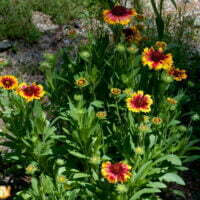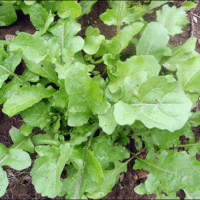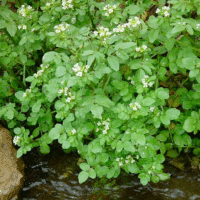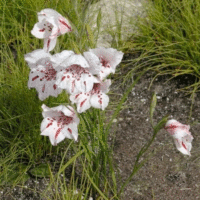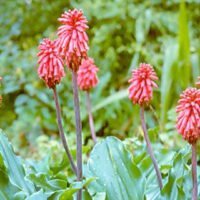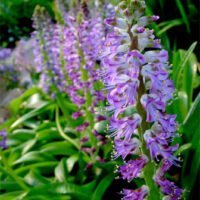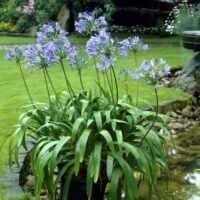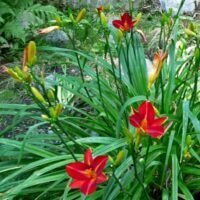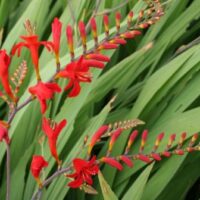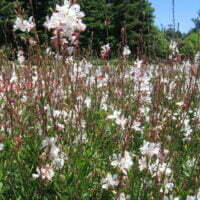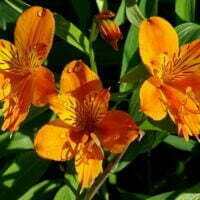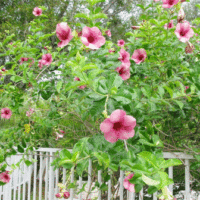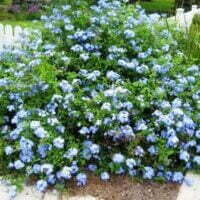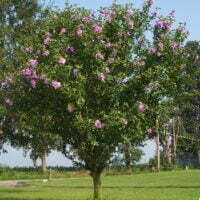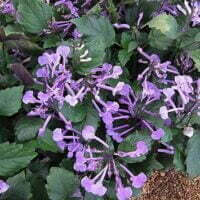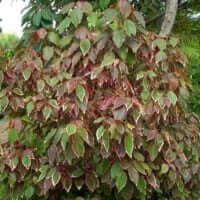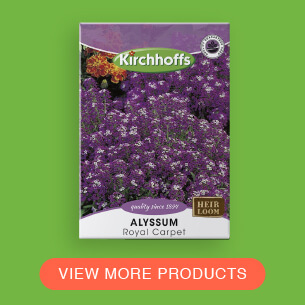What to do in your garden during March
The end of summer is drawing near, but the late summer garden still has plenty to keep the boredom at bay. Follow these tips and pointers to help your garden look its best this March.
Plant & sow
Annuals
The following can be sown now to ensure fresh colour during next summer:
-
 Dianthus (Carnation, Pink)
Dianthus (Carnation, Pink) -
 Linum grandiflorum (Flax)
Linum grandiflorum (Flax) -
 Centaurea cyanus (Cornflower)
Centaurea cyanus (Cornflower) -
 Delphinium grandiflorum (Butterfly delpinium)
Delphinium grandiflorum (Butterfly delpinium) -
 Alcea rosea (Common hollyhock)
Alcea rosea (Common hollyhock) -
 Malcolmia maritima (Virginian stock)
Malcolmia maritima (Virginian stock) -
 Iberis umbellata (Candytuft)
Iberis umbellata (Candytuft) -
 Gaillardia pulchella (Blanket flower, Indian blanket)
Gaillardia pulchella (Blanket flower, Indian blanket) -
 Clarkia amoena (Godetia whitneyi) (Satin flower, godetia)
Clarkia amoena (Godetia whitneyi) (Satin flower, godetia) -
 Campanula medium (Canterbury bell)
Campanula medium (Canterbury bell) -
 Anchusa capensis (Anchusa, Cape forget-me-not)
Anchusa capensis (Anchusa, Cape forget-me-not)
Herbs and Vegetables
All these herbs and vegetables can be planted now:
-
 Eruca sativa (Rocket)
Eruca sativa (Rocket) -
 Petroselinum species (Parsley)
Petroselinum species (Parsley) -
 Allium schoenoprasum (Chives)
Allium schoenoprasum (Chives) -
 Daucus carota (Carrots)
Daucus carota (Carrots) -
 Ocimum basilicum (Basil (sweet))
Ocimum basilicum (Basil (sweet)) -
 Brassica oleracea var. capitata (Cabbages)
Brassica oleracea var. capitata (Cabbages) -
 Beta vulgaris var. esculenta (Beetroot)
Beta vulgaris var. esculenta (Beetroot) -
 Nasturtium officinale (Watercress)
Nasturtium officinale (Watercress) -
 Brassica oleracea var. botrytis (Cauliflower)
Brassica oleracea var. botrytis (Cauliflower) -
 Brassica oleracea var. gemmifera (Brussels sprouts)
Brassica oleracea var. gemmifera (Brussels sprouts) -
 Brassica oleracea var. italica (Broccoli)
Brassica oleracea var. italica (Broccoli)
Shrubs and Perennials
- Now is the time to start planting gladiolus, lachenalia and veltheimia bulbs. Visit your local nursery or home improvement store and have a look at what’s available for planting during March.
All of these perennials can be planted in March:
Start buying bulbs, like anemones and ranunculus, and store them until March.
Now is a good time for planting new trees and shrubs, they still have enough time to establish before the onset of winter.
Plant the following climbers and shrubs to add colour to your March garden:
-
 Hibiscus schizopetalus (Japanese lantern)
Hibiscus schizopetalus (Japanese lantern) -
 Hibiscus rosa-sinensis (Chinese Hibiscus; rose of china;hawaiian hibuscus)
Hibiscus rosa-sinensis (Chinese Hibiscus; rose of china;hawaiian hibuscus) -
 Mandevilla splendens (Mandevilla)
Mandevilla splendens (Mandevilla) -
 Plumbago (Leadwort)
Plumbago (Leadwort) -
 Hibiscus syriacus (Rose-of-Sharon, Syrian hibiscus)
Hibiscus syriacus (Rose-of-Sharon, Syrian hibiscus) -
 Plectranthus species (Spur-flower, Plectranthus)
Plectranthus species (Spur-flower, Plectranthus) -
 Pentas lanceolata (Star flower, star cluster, Egyptian stars)
Pentas lanceolata (Star flower, star cluster, Egyptian stars) -
 Anisodontea capensis (Wild hibiscus)
Anisodontea capensis (Wild hibiscus) -
 Acalypha wilkesiana ‘Marginata’ (Fijian fire bush, copper leaf)
Acalypha wilkesiana ‘Marginata’ (Fijian fire bush, copper leaf)
View one of our regional maintenance guides for more accurate suggestions.
Garden Maintenance
General Garden Maintenance
- Feed pelargoniums and spray against rust where necessary.
Lift and divide white arum lilies and irises after they have finished flowering. - Feed the lawn and mow regularly.
- Fertilize roses and prune them lightly for lovely autumn blooms.
Spray regularly against black spot and mildew. - Control ants, as they introduce aphids and scale to your plants.
Make cuttings of azaleas, fuchsias, hibiscus, camellias and impatiens. - Finish planting nerine bulbs.
- Annuals, Roses, and perennials like geraniums, daisy bushes and lavender need to be deadheaded regularly to promote growth and encourage flowering. Phlox and catmint also respond well to deadheading. Remember to de-bud Dahlias at regular intervals.
- Hedges, standards or “lollypops”, screens and topiaries need to be pruned regularly to keep them neat and in shape.
- Fertilize and water Pelargoniums, Cannas, Gladiolus and Dahlia well and repeat feeding every second week or so.
- Prune Acanthus mollis down to ground level and mulch well.
- Check Dahlias and Hydrangeas for red spider mite.
- Arum lilies, Irises and Cannas can still be divided and replanted this month.
- Tip and semi-hardwood cuttings can be made from the spring growth of Rhododendrons (Azalias) and Camellias.
- Start watering Camellias well and mulch around but not against the stems.
- Spray grapes for mildew if necessary.
- Water Strawberries, Mulberries, Guavas, Pawpaws, and Citrus well. Ensure Chrysanthemums well supported and feed them every second week with a water-soluble fertiliser
Watering
- Water all trees well once a month during dry weather and trim any branches that have been broken by wind or hail. Continue to feed Annuals with a liquid fertilizer every second week.
- Water the entire garden well during dry periods and pay special attention to the roses, water them nice and deep at least once a week. Keep your Agapanthus which are now in full bloom well watered for a really spectacular show.
- To minimise your gardens water requirements:
- Refrain from watering during mid-day.
- Water thoroughly and deep at less frequent intervals rather than a quick splash on a more regular basis.
- Though it is often tempting remember not to turn or “cultivate” the soil as this invites evaporation and stimulates weed seed germination.
- Consider putting up a rainwater tank this rain season, as a wide variety of vegetables and container-grown plants give best results if watered with rainwater.
- Keep the garden well mulched.
Lawn
Mow bunch type and finer leaf lawns once a week, Kikuyu looks and performs best when mowed twice a week.
Weeds
- Remove weeds from the lawn by applying a broad-leaf weed-killer, weeds in the garden bed are best removed by hand before they flower and set seed.
- Treat weeds in the driveway and paving with boiling water on a hot day, remove them by hand make use of a number of no- selective weed-killers available on the market. – avoid spraying on windy days and strictly follow the dosage and package instructions.
- Minimise weeds by applying mulch and weed guard or landscape fabric and refrain from turning or “cultivating” the soil.
Pests & Disease
- Spray regularly where necessary to keep the garden free of pests. – There are a number of organic products and remedies available.
- Red spider mites love the hot dry weather so keep a close eye throughout the garden – they tend to gather on the undersides of foliage and can be treated with a spray of cold water when present in smaller numbers.
- Keep an eye out for dollar spot on the lawn.
- Mildew also tends to be a problem now (especially on Zinnias) spray if necessary
- Amaryllis-borer caterpillar is a persistent problem on Clivias, Amaryllis, Zantedichia, Agapanthus and nerine so squish these black and yellow striped terrors on sight.
For more accurate garden maintenance tips in your climate visit this link and select the most suitable region.










